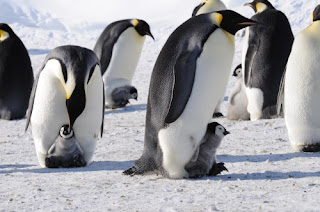Penguin DNA Study Tainted by Evolutionary Guesswork
Penguins are actually more diverse than many people may realize. Images of large king or emperor penguins down yonder in Antarctica may come to mind, but some are much smaller. There are even penguins in warm climates — which is troubling for evolutionary dogmas.
Penguins were created to adapt, survive and thrive. In the past, there were many more types of penguins than we have now, which is thought to be twenty-seven species. Scientists managed to obtain samples of their DNA and have begun to analyze them. Researchers are comparing the species with each other, and also with other birds. Unfortunately, they taint the research by assuming deep time and evolution, then use weasel words to hedge their bets. The research will still be useful, however, once the jargon is ignored.
We know that they are flightless birds and amazing swimmers that are quick and utilize air jackets, but there are other stark differences between penguins and other birds. They do not have a crop used in grinding and digesting food, for instance, and their bones are denser.
 |
| Emperor Penguins, National Science Foundation / Dr. Paul Panganis (usage does not imply endorsement of site contents) |
Penguins have captured many people’s imaginations. These aquatic, flightless birds have been incorporated into many cartoons wearing tuxes, dancing intricate choreographies, or providing strategic care for others. Their black and white exteriors, upright postures, and natural behaviors can definitely fuel an author’s imagination. But what makes these birds so unique and the subject of continued scientific research? Reuters recently highlighted the research of Theresa Cole and others on penguins, as they look to obtain a more robust understanding of what makes penguins unique both physically and genetically.
To keep reading, swim on over to "Penguins: All Dressed Up and Nowhere to Go." You may also be interested in "Penguin Eggs Put Evolutionary Thinking on Ice."